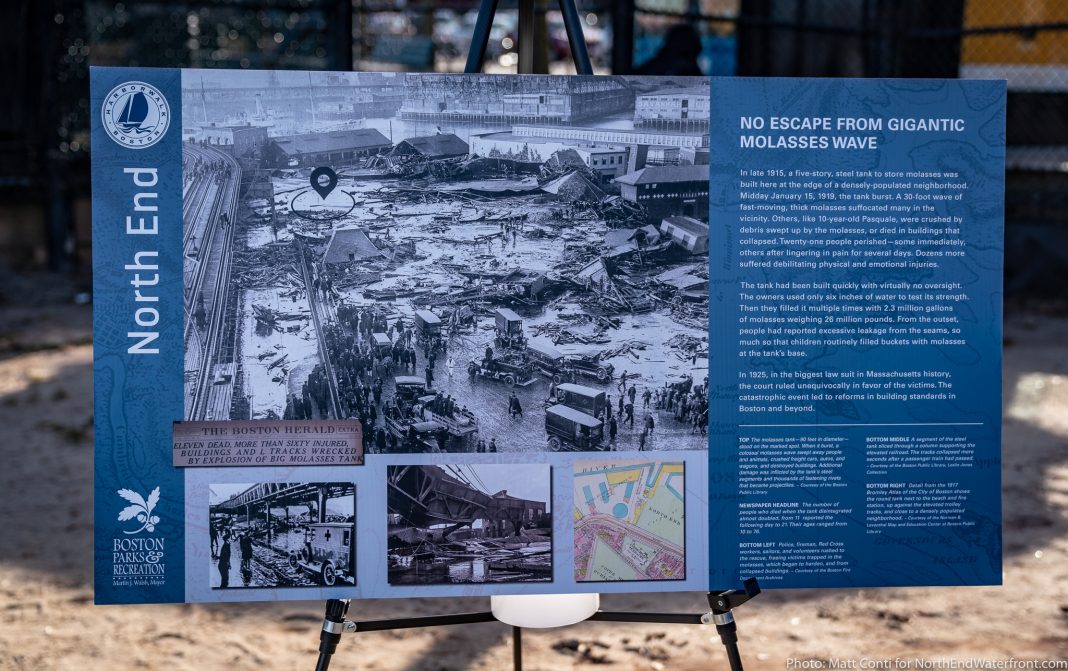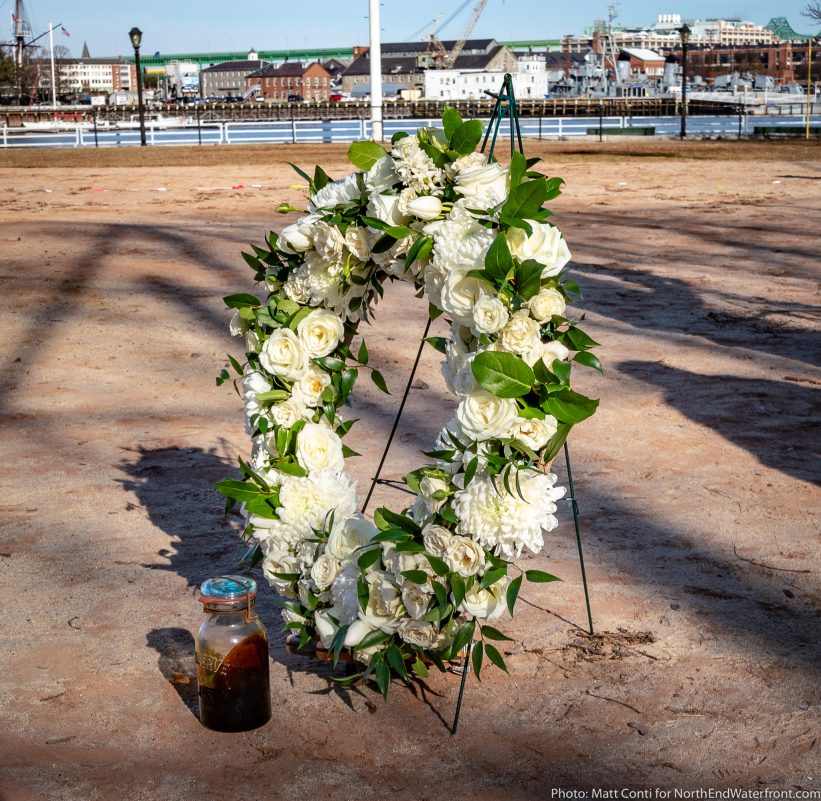Honoring the 100th anniversary of Boston’s Great Molasses Flood, residents and dignitaries came out on a chilly morning to form a human circle on the former location of a 90 foot wide molasses tank, located at what is now Langone Park on Commercial Street in Boston’s North End. Twenty one people were killed and another 150 injured when the faulty tank ruptured and exploded on January 15, 1919.

For the commemoration, researchers performed a special underground radar survey revealing the exact location of the molasses tank’s foundation. The base of the tank is still there, 20 inches below ground.

Using flagged markings of the actual tank perimeter, event attendees formed a human circle on what is now the little league field at Langone Park. The site survey was performed by the Fiske Center for Archaeological Research at UMass Boston, led by John Steinberg, PhD, who displayed the geophysical results at the commemoration. (View site maps and the technical article on the ground survey.)

Purity Distilling Company, a subsidiary of U.S. Industrial Alcohol Company, built the tank, 50 feet high and 90 feet wide on Commercial Street near where the bocce courts are located today at Langone Park. A huge wave of the syrupy brown liquid moved at a speed of 35 mph over two blocks destroying all in its path. In today’s dollars, the property damage is estimated at over $100 million. View photos from the 1919 tragedy.

Boston Parks Commissioner Chris Cook led the commemoration with a wreath laying by the North End’s State Rep. Aaron Michlewitz and Boston Archeology’s Joe Bagley.


The 1919 tragedy in the densely populated, largely Italian-American immigrant North End neighborhood at the time, was initially believed to be the result of a terrorist act. Taking advantage of the anti-Italian sentiment at the time, company attorneys for the tank-owner tried to blame sabotage by political anarchists. The resulting investigation and legal hearings – involving 125 lawsuits – was the longest up until then in the history of the Massachusetts court system. It ended in 1926 with a conclusive judgment: the tank had been improperly designed in the first instance and its failure was due entirely to structural weakness, not to a terrorist attack.

A preview of new interpretive signage for the Harborwalk was on display at the event. The new signage will be installed as part of the upcoming renovation of Langone Park and the surrounding Harborwalk.

A 2016 research study on the Great Molasses Flood of 1919 in Boston’s North End says that January’s cold weather made the molasses extra deadly. The cooling increased the thickness of the sweet syrup, making it incredibly hard to escape.

The disaster brought nationwide attention to the lack of industrial safety standards. Complaints of cracks and leaks in the tank were literally covered with brown paint by the company that initially said anarchists blew up the tank. Later, a lengthy class action lawsuit brought forward damaging evidence resulting in a settlement of $600,000 (~$11 million in today’s dollars).

Although Purity used the molasses for industrial alcohol, some hypothesize that the tank was overfilled because of the prohibition threat for possible use later to distill rum. Neighborhood folklore has it that you can smell the ill-sweet remains in the summer’s hottest weather. (Sources: Wikipedia, Mass Moments, Wired)



